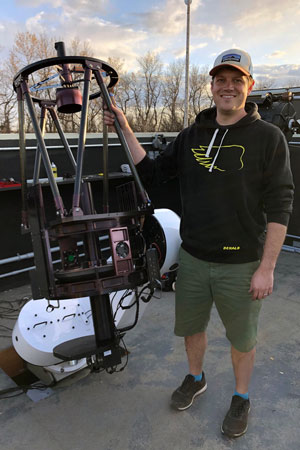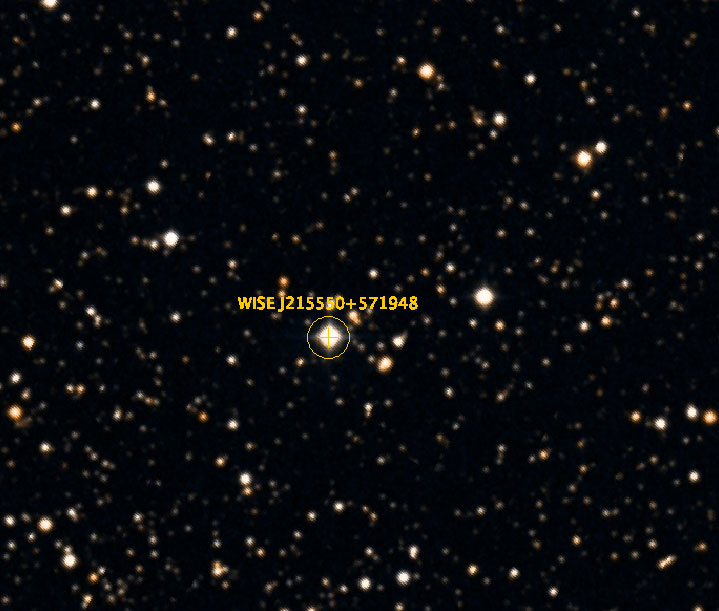
Skies wide open for USask student astronomers
In online astronomy courses, first- and second-year USask students are making new discoveries about stars in our galaxy
By Chris Putnam
In online astronomy courses at the University of Saskatchewan (USask), first- and second-year students are making new discoveries about stars in our galaxy.

USask astronomy students have been conducting original research this fall and winter using a new robotic telescope installed at the Sleaford Observatory near Saskatoon. The project is one of many innovations brought by instructor Dr. Daryl Janzen (PhD) as he adapts USask’s astronomy courses to an online format during the COVID-19 pandemic.
“That’s something we’ve all been thinking about as instructors, is how do we take a class and modify it so that it’s not just a shadow of what it normally is, but so we actually get something positive out of it,” said Janzen, who teaches in the College of Arts and Science’s Department of Physics and Engineering Physics.
In ASTR 213 during the 2020 Fall Term, Janzen’s students researched periodic variable stars: stars that vary in brightness over periods of time.
“Within the last decade or so, there have been at least a million new periodic variable stars that have been discovered by astronomical surveys. But the surveys often observe in just one or two photometric bands, where we’re not looking at all the different light—we’re only looking at, say, one form of light. And there’s a lot of information that can be gained about a system by observing it in multiple colours,” said Janzen.
That’s where USask astronomy students can help. Members of Janzen’s class conducted follow-up surveys of variable stars previously discovered by the Wide-field Infrared Survey Explorer (WISE), a NASA space telescope.
By analyzing light curves collected using USask’s robotic telescope, the students classified the stars and determined properties such as size, mass, distance or temperature.

One surprising finding by the students was that many of the stars they studied had been misclassified in astronomers’ initial surveys. For example, they found that some objects catalogued as single stars were actually binary systems: two stars orbiting each other.
“It’s showing that studies like the one we are doing are actually meaningful,” said Janzen.
The ASTR 213 students have shared their results on the USask Observatory blog and their work will eventually be submitted officially to a variable star journal or database.
Janzen’s current ASTR 113 students will complete a similar research project during the winter term. The first- and second-year students’ work is part of a larger collaboration with Rina Rast, an upper-year USask astronomy student and research coach in ASTR 113.

Rast will expand on her fellow students’ work as part of a more in-depth research project on periodic variable stars she is undertaking for PHYS 493, an advanced undergraduate course.
The research is only possible because of the new robotic telescope known as PROMPT-USASK. The telescope can be remotely controlled by any computer connected to the internet.
“My project relies on being able to repeatedly observe a set of targets at specific intervals over a period of time, rather than spending an entire night on the same object. The PROMPT-USASK telescope is perfectly suited for this style of observing, allowing me to schedule sets of observations in advance so the telescope can take the images when conditions allow. In the end, this gives me large datasets that I can use as the basis for my research,” said Rast.
It is one of many possibilities unlocked by the new telescope. In another class assignment, Janzen’s students were invited to take their own spectacular photos of distant galaxies and share them on social media.
Through an international telescope network called Skynet, USask students can access telescopes in the United States, Australia and Chile as easily as the one at the Sleaford Observatory. In an assignment for ASTR 104 and ASTR 113 this term, Janzen’s classes will photograph an asteroid simultaneously through the PROMPT-USASK telescope and an identical telescope in Chile.
By comparing the perspectives of the two images, the students will calculate the distance to the asteroid as though they were looking through the world’s largest pair of binoculars.
“It’s something we can only do because we have access to telescopes around the world,” Janzen said.
The seats in Janzen’s 2021 Winter Term astronomy classes quickly filled up before the start of the term.
“It’s absolutely wonderful to see such growing interest in astronomy. We’ve invested a lot in new resources and programming, so it’s really exciting to see the increased uptake from students and the positive feedback they’ve given, whether that’s to say they were happy they chose to take astronomy as an elective or because they’ve decided to pursue a degree in the area,” said Janzen.

